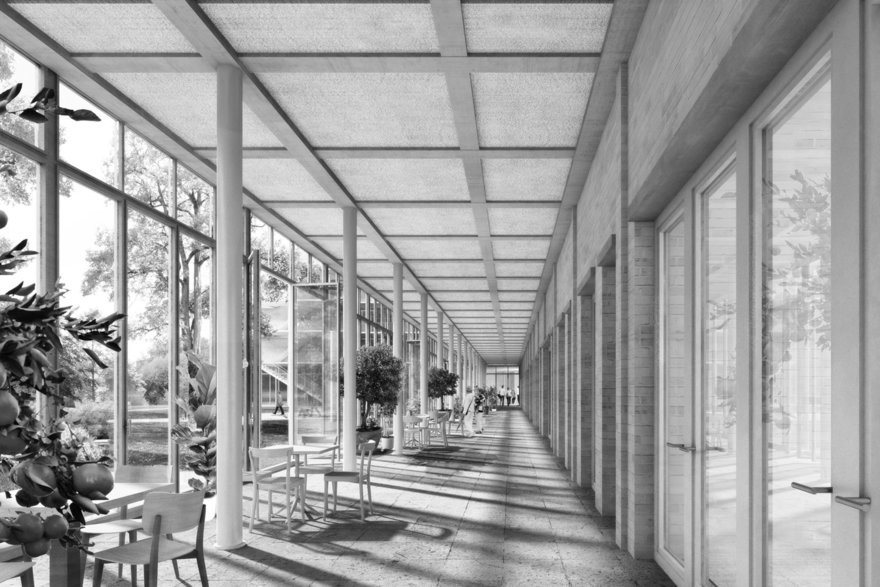Switzerland's Generation House: A Combination Retirement Home/Childcare Center
Interaction between the generations provides mutual benefit
In America we have retirement homes and daycare centers. We take it for granted that these are separate facilities. It takes the Swiss to ask: Why? Generationenhaus Neubad (Generation House Neubad) in Basel is both, to the benefit of both the children and the elderly.

Each weekday morning, the facility's "Movement and Encounter Landscape," a sort of combination playroom and physical therapy center, is filled with those from both generations.

"The common physical, mental and social resources of our older people and children should be captured and promoted in a playful way," GH writes. "Children in particular have a natural need for movement and can thus encourage the residents to 'move with us.' Children and residents benefit equally, fear of contact is reduced and mutual respect is built up. The children encourage the residents to try new things and the residents teach the children to be open to people of all ages."

"An anti-fall program is integrated throughout the process. Its goal is to maintain and promote independence, quality of life and social contacts. In joint playful training, the aging processes are reduced in the residents and the development processes in the children are promoted. Something new is created every day. There is experimentation, play, learning, exchange, development and traditions are not neglected."

Mealtimes, and the preparations required, are another opportunity for intergenerational interaction. Both generations cook together in small groups, with supervision. "When cooking 'old and young,' the residents support the children, they help them with the preparation (cutting, washing, peeling, rolling out the dough, etc.) and show the rules of table manners while eating together. To a certain extent, the residents assume the role of grandparents. This procedure can be very lively, which has a positive effect on both parties. The children, on the other hand, awaken the spirits of the residents with their bright eyes."

"In order to create a family environment, cooking takes place in small groups of 3 children and 3 residents. This is accompanied by a specialist from the day-care center and one specialist from care and one from everyday life."

One difference in experiences is that the children go home at 7pm, whereas the residents, of whom there are 87, stay on. Some live in simple single rooms, whereas others share senior apartments of 1.5, 2.5 or 3.5 rooms (the .5 being a bathroom). Every living space has a balcony, and there are of course nursing attendants on-staff 24-7.



Additionally, group excursions are taken with both generations once a month, taking daytrips to fairs, festivals and markets. And for parents with both the generation above and below them spending time at the facility, the convenience can't be beat.

In short, the Generation House seems like a great idea, and it's a shame the idea isn't more widespread. Could you see this working in the U.S. or other parts of the world, and why or why not?
-
o6Favorite This
-
Q4Comment
K
{Welcome
Create a Core77 Account
Already have an account? Sign In
By creating a Core77 account you confirm that you accept the Terms of Use
K
Reset Password
Please enter your email and we will send an email to reset your password.

Comments
love it, although my first thought is, imagine all the viruses and illnesses that the kids will pass on to the oldies. My son comes home from nursery with a new illness every time he goes there!
Such a good point! It definitely must be taken into consideration before choosing a center like that, but I personally would rather kick the bucket earlier whilst having a lively time, than mummify slowly alone.
This is so thoughtful. Seems like this could of happened earlier.
Love this!